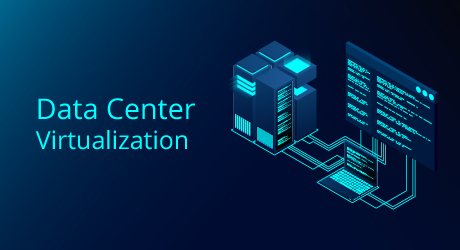Notifications
ALL BUSINESS
COMIDA
DIRECTORIES
ENTERTAINMENT
FINER THINGS
HEALTH
MARKETPLACE
MEMBER's ONLY
MONEY MATTER$
MOTIVATIONAL
NEWS & WEATHER
TECHNOLOGIA
TV NETWORKS
VIDEOS
VOTE USA 2026/2028
INVESTOR RELATIONS
COMING 2026 / 2027
ALL BUSINESS
COMIDA
DIRECTORIES
ENTERTAINMENT
FINER THINGS
HEALTH
MARKETPLACE
MEMBER's ONLY
MONEY MATTER$
MOTIVATIONAL
NEWS & WEATHER
TECHNOLOGIA
TV NETWORKS
VIDEOS
VOTE USA 2026/2028
INVESTOR RELATIONS
COMING 2026 / 2027
About Me
 Lets Tech It easy
Lets Tech It easy LTIE is the blogging platform for everyone who wants to share and learn about technology.
Posted by - Lets Tech It easy -
on - September 25, 2023 -
Filed in - Technology -
448 Views - 0 Comments - 0 Likes - 0 Reviews

Data center virtualization is a groundbreaking technology that has revolutionized the way organizations manage and optimize their IT infrastructure. In this article, we will delve into the world of data center virtualization, exploring its key concepts, benefits, and how it is reshaping modern data centers.
Understanding Data Center Virtualization:
Data center virtualization involves the abstraction of physical hardware and resources, such as servers, storage, and networking, into virtual entities. These virtual resources can then be allocated and managed efficiently to meet the diverse needs of applications and services.
Key Benefits of Data Center Virtualization:
Resource Optimization: Virtualization allows for the efficient use of hardware resources, reducing the need for excess physical equipment and lowering operational costs.
Flexibility and Scalability: Virtualization enables rapid provisioning and scaling of virtual machines (VMs) to accommodate changing workloads, making it easier to adapt to business demands.
Enhanced Disaster Recovery: Virtualization simplifies backup and disaster recovery processes, ensuring data resilience and minimizing downtime.
Energy Efficiency: By consolidating physical hardware, data center virtualization contributes to reduced energy consumption and a smaller carbon footprint.
Improved Management: Centralized management tools streamline the administration of virtualized environments, enhancing overall operational efficiency.
Types of Data Center Virtualization:
Server Virtualization: This is the most common form of virtualization, where multiple virtual servers run on a single physical server, increasing resource utilization.
Storage Virtualization: Storage resources are abstracted and pooled, making it easier to allocate, manage, and scale storage capacity.
Network Virtualization: Network components, including switches and routers, are virtualized to create a flexible and dynamic network infrastructure.
Implementing Data Center Virtualization:
To deploy data center virtualization effectively, organizations need to follow these steps:
Assessment and Planning: Evaluate the existing infrastructure, identify virtualization goals, and create a detailed plan.
Hardware and Software Selection: Choose the right virtualization platform (e.g., VMware, Hyper-V) and ensure hardware compatibility.
Virtualization Deployment: Install and configure virtualization software, create VMs, and allocate resources based on workload requirements.
Migration and Testing: Migrate existing workloads to virtualized environments and conduct thorough testing to ensure proper functionality.
Monitoring and Optimization: Implement monitoring tools to track performance and optimize resource allocation over time.
Challenges and Considerations:
While data center virtualization offers numerous advantages, it also comes with challenges, such as security concerns, potential performance bottlenecks, and complexity in management. Proper planning, security measures, and ongoing monitoring are crucial to addressing these issues.
Conclusion:
Data center virtualization has become a cornerstone of modern IT infrastructure, driving efficiency, scalability, and cost savings. By embracing virtualization technologies and best practices, organizations can stay agile and competitive in an increasingly digital world while optimizing their data center operations for the future.
